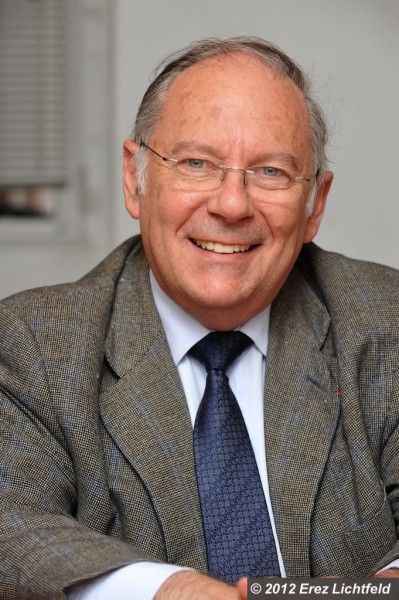Speaking of the Hassidim of Bratslav, (Bretslover in Yiddish), we do not completely avoid the news. War, cut airlines and warnings from the governments of Ukraine, Israel, or the United States, nothing helped, the Bretslovers returned to Uman for Rosh Hashanah, 20,000 they say, not far of the 40,000 in the years before Covid.
Rabbi Nahman’s Hasidut has never been very numerous, but the pilgrimage attracts other faithful and, beyond that, Jews who are not always very orthodox in search of spirituality.
The high point is the tachlich, when pilgrims in white robes lay down their sins in the lake bordering Ouman and recite the Tikkun Haklelali, the series of 10 psalms against evil developed by Rav Nahman. All are there to recharge their spiritual batteries and the fervor that emanates from this mass of joyful men leaves a strong impression on the participants.
Why Uman? Nahman, his house in Bratslav destroyed in a fire, spent only a year there, sick with tuberculosis and died at the age of 38, in 1810. He would have chosen the city because of its cemetery, where had been buried forty years earlier, the victims of a great massacre of Jews perpetrated by the haidamaks, these Ukrainian peasants supported by the Russian Empire and revolted against their Polish masters. The times have changed…
So there were in this cemetery, which was called house of life, bet Haim, many Jewish souls that Rabbi Nachman wanted to defend before the divine tribunal.
He had taught in Bratslav, 100 km from Ouman, for eight years, after returning from his trip to the land of Israel. He had found an exceptional pupil there, Nathan Sternharz de Nemirov, Réb Noussn for the faithful. By him, the life and ideas of Nahman de Bresław are well known, in famous books that shaped the Bratslav movement. Only the writings remain, which may skew our understanding: other disciples probably drew somewhat different conclusions from Nahman than from Nathan.
Nahman, in his emotional doctrine, insisted on a phrase of the prophet Ezekiel: “I will remove the heart of stone from your body, and I will give you a heart of flesh”, Lev bassar. Lev bassar, the same consonants as Breslov; curiously, Rabbi Nathan’s name, Sternharz meant “hard heart.”
It was Nathan who instituted the pilgrimage to Uman. Visiting the tomb of a Hasidic master was not exceptional, but Ouman played a special role among the bretslovers. At the heart of the tsarist repression and then after the ban by the communist regime, there were a handful of faithful ready to run all the risks to come. Some, it is said, to prevent the construction of a building from destroying Nahman’s tomb, brought in President Carter himself. Since the end of communism, the pilgrimage has become an impressive tourist event…
Bratslav did not create a dynastic line like the other movements, which earned him the nickname “Die toyte hassidim”, the “dead Hassidim”. In fact, Nahman rejected the, shall we say, “commercial” evolution of Hasidism that he saw in the descendants of the Baal Shem Tov, his own great-grandfather, and he had no family successor.
But this is also due to his doctrine. Instead of making them confess their sins, often related to sexuality, he came to ask his disciples to seek by themselves and deep within themselves the tzadik, that is to say justice. The hitbodedout, the daily spiritual isolation devoted to inner meditation, allows this personal relationship with God. It is, according to Nahman, who here prolongs the cabal of Luria, with the breaking of the vases, a difficult work, full of obstacles. The joy with which the name of Nahman of Bratslav is associated is the product of a fight, which was probably also the fight of his own life, marked by his illness and the death of his loved ones. I’m thinking of Camus’ phrase: “You have to imagine Sysiphe happy”.
Natan always considered himself the simple disciple of Rabbi Nahman. He considered him to be a messianic personality on the scale of Moses. No one could therefore replace Nahman, but to administer his estate, Natan had too divisive a personality to be unanimously approved. The Hasidut of Bratslav has retained an anarchic character. It contrasts with the Chabad which was able to remain centralized without naming a successor to the Rebbe, also considered by many of his followers to be a messianic figure.
But before Nahman, no Hasidic master had had messianic pretensions, and the memory of the false messiah Shabtai Zvi was still vivid. It is therefore not surprising that the writings of Natan have given rise to virulent polemics within Hasidism itself and that the movement of Nahman of Bratslav has remained diversified and marginal.
It is popular today, because its spirituality can also be declined in a “New age” form in harmony with the contemporary quest, but it does not however avoid the phenomena of influence. The line between spiritual master and guru is fragile. The recent indictment of a well-known Bretzlover rabbi in Israel, Eliezer Berland, testifies to this. Despite his heavy record, he retains a core of supporters convinced that the charges against him prove his messianic character.
Whatever the value of a religious tradition, the risk of influence on minds should never be underestimated when it claims absolute exclusivity in the private or public space.
© Richard Prasquier

